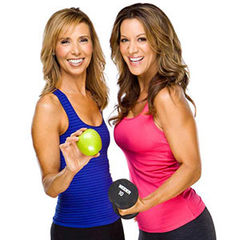The cold, damp weather and shorter days of winter have us craving warmer, dense, comfort foods. But instead of indulging in less-than-healthy fare like macaroni and cheese or shepherd’s pie, give yourself a nutritional boost by incorporating winter squashes into your meal plans. Loaded with antioxidants, fiber and essential vitamins and minerals, squashes come in a variety types and flavors, and can be used as a main course or a side dish. Here is a breakdown of the benefits of some of the more common types of winter squash.
Butternut squash is a popular type of squash due to its ease of preparation and high nutrient content. Its nutty, full-bodied flavor is complemented by heavy doses of fiber, aiding in the health of your colon, lowering cholesterol, stabilizing blood glucose levels and suppressing appetite longer. It is also rich in carotenoids (including the antioxidant beta-carotene, the precursor to vitamin A), which benefits skin and eye health. Its high mineral content also makes it a good source of electrolytes that aid in your cardiovascular system and neuron communication during muscle contraction, which is vital for exercise maximization and everyday living. Electrolytes found in butternut squash include potassium, copper and magnesium.
A close relative to pumpkins and zucchinis, acorn squash is a nutrient-dense winter squash that is sweet and nutty; its texture is similar to sweet potatoes and butternut squash. Ripe acorn squash, which is dark green and ribbed, is rich in vitamin C, a powerful antioxidant that fights free radicals and therefore reduce the risk of cancerous cell growth. Vitamin C also acts as an immune booster and simultaneously reduces the risk of developing or worsening symptoms of hypertension. Acorn squash has a high fiber content, which has been linked to a decreased risk of diabetes, stroke and obesity.
Another powerful winter squash is spaghetti squash. This stringy, yellow squash can be used in place of spaghetti noodles, creating a cleaner, more nutrient-dense meal than traditional pasta. It also is full of potassium, which aids in cardiovascular health by lowering blood pressure when eaten frequently. The folate (vitamin B9) in these nutritious “noodles” strengthens the walls of blood vessels, which helps improves blood circulation, and is a critical vitamin for women of childbearing age, as folate is imperative to preventing neural tube defects. Its high content of omega fatty acids adds to its anti-inflammatory benefits, making it a powerhouse for reducing inflammation.
Kabocha squash is similar to butternut squash, but it has a bright orange flesh (a sign of high beta-carotene content) when its green skin is broken. Although similar in taste, kabocha squash has fewer calories and carbohydrates than butternut squash. It also is high in iron and fiber. Halved and roasted kabocha squash can be lightly seasoned or stuffed to sweet perfection. Unlike its squash cousins, the skin of this winter squash is edible.
Hubbard squash is an uncommon winter variety, but this sweet, orange variety is rich in manganese, which is necessary in the process of metabolism and blood sugar regulation.
By shopping for produce at local farmers markets, you are likely to find that the vendors sell what grows well for the season. As a whole, winter squashes are very high in fiber, vitamins C and A, antioxidants and minerals. By incorporating all varieties of winter squash to your diet, you can reap the nutritious benefits of these seasonal specialties.




 by
by 







 by
by